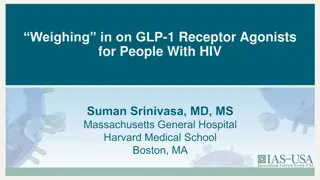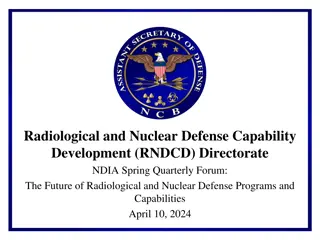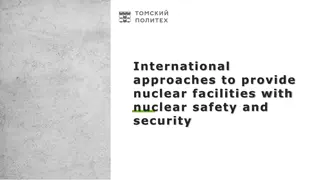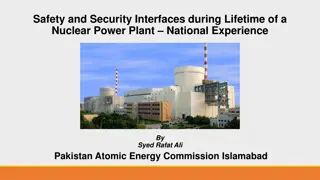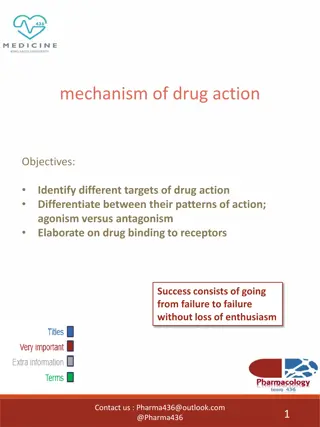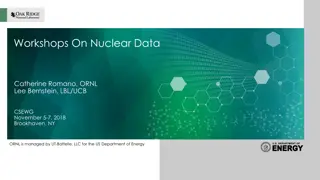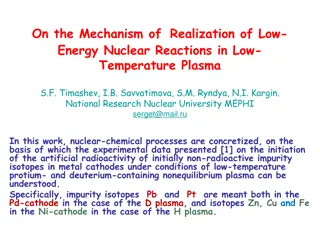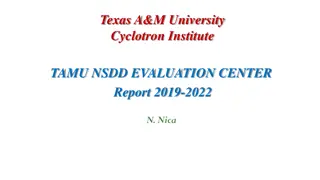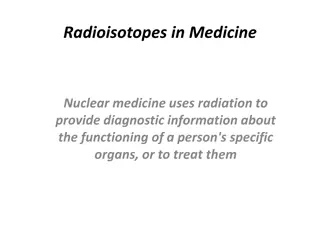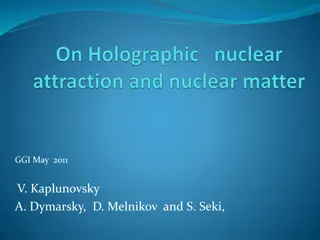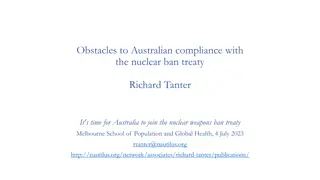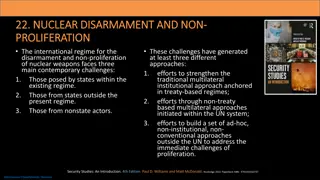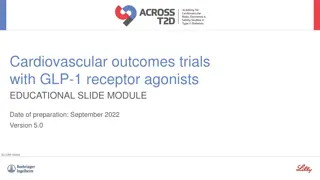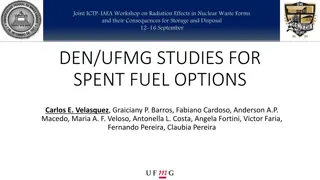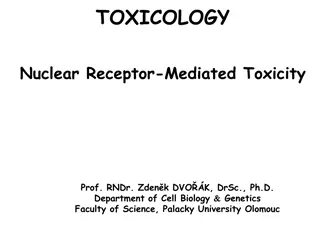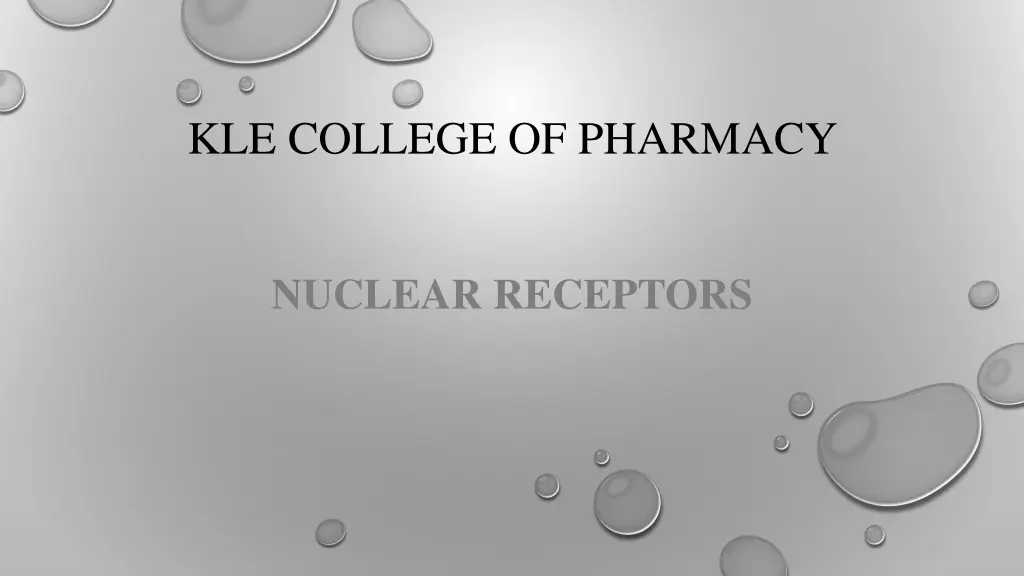
Understanding Nuclear Receptors in Gene Transcription Regulation
Explore the world of nuclear receptors, versatile proteins that play a crucial role in regulating gene transcription. Discover their structure, classification, and control mechanisms, shedding light on how they modulate gene expression in response to various ligands. Dive into the intricate details of these ligand-activated transcription factors and their significance in cellular functions.
Download Presentation

Please find below an Image/Link to download the presentation.
The content on the website is provided AS IS for your information and personal use only. It may not be sold, licensed, or shared on other websites without obtaining consent from the author. If you encounter any issues during the download, it is possible that the publisher has removed the file from their server.
You are allowed to download the files provided on this website for personal or commercial use, subject to the condition that they are used lawfully. All files are the property of their respective owners.
The content on the website is provided AS IS for your information and personal use only. It may not be sold, licensed, or shared on other websites without obtaining consent from the author.
E N D
Presentation Transcript
KLE COLLEGE OF PHARMACY NUCLEAR RECEPTORS
CONTENTS Introduction Key points nuclear receptors Structure of nuclear receptors Classification of nuclear receptors Control of gene transcription through nuclear receptors References 2
Nuclear receptor These are receptors that regulate gene transcription. The term nuclear receptors is something of a misnomer, because some are actually located in the cytosol and migrate to the nuclear compartment when a ligand is present. They include receptors for Steroid hormones. Thyroid hormone and other agents such as retinoic acid. Figure 1:Nuclear receptor as a polypeptide 3 Vitamin D.
Key points nuclear receptors Receptors for steroid hormones such as estrogen and the glucocorticoids are present in the soluble phase of cytoplasm of cells and are translocated into the nucleus after binding with their steroid partner. Nuclear receptors family can be considered as ligand-activated transcription factors that transduce signals by modifying gene transcription. Unlike other receptors the nuclear receptors are not embedded in membranes but are present in the soluble phase of the cell. 4
Some, such as the steroid receptors, become mobile in the presence of t ligand and can translocate from the cytoplasm to the nucleus. Others such as the RXR (retinoid receptor) probably dwell mainly within the nuclear compartment. Some NRs, while unliganded, act to constitutively repress some genes (e.g. RXR). 5
STRUCTURE OF NUCLEAR RECEPTORS Figure 2:Structure of nuclear receptors 6
All nuclear receptor are monomeric proteins. Molecular weight may be around 50-100 kDa. A/B or N-terminal domain: Harbors AF1 site that binds to other cell specific transcription factors in a ligand-independent way and modifies the binding or activity of the receptor. C or DNA binding domain: binds to the specific sequences of DNA called hormone response element. 7
D or Hinge region: connects the DNA binding domain to the ligand binding domain. E or Ligand Binding domain: Harbos the AF2 whose action depends upon the bound ligand. F or C-terminal domain: has ability to the transcription. 8
CLASSIFICATION OF NUCLEAR RECEPTORS 1. Class 1 nuclear receptors. 2. Class 2 nuclear receptors. 3. Class 3 nuclear receptors, 9
CLASS 1 NUCLEAR RECEPTORS Largely steroid receptors. Ligands are mainly steroids. Located in cytoplasm or attached to cytoskeleton or other structures. When ligand binds, form homodimers in the presence of their partners and migrate to nucleus to trigger signal response. A single ligand can regulate a large number of genes. E.g. GR(Glucocorticoid receptor), o MR(Mineralocorticoid receptor), 10 o ER(Estrogen receptor).
CLASS 2 NUCLEAR RECEPTORS Their ligands are mainly lipids. Located in nucleus. They form heterodimers with retinoid X receptors. They tend to mediate positive feedback effects ( e.g. occupation of the receptor amplifies rather than inhibits a particular biological event). o PPAR: Peroxisome Proliferator Receptor o LXR: Liver oxysterol Receptor, o RXR: Retinoid Receptor. 11
CLASS 3 NUCLEAR RECEPTORS They transduce endocrine signals but function as heterodimers. The group includes the, Thyroid hormone Receptor (TR), Vitamin D Receptor (VDR), Retinoic Acid Receptor(RAR). 12
CONTROL OF GENE TRANSCRIPTION THROUGH NUCLEAR RECEPTORS Hormone response elements are the short sequences of DNA to which the nuclear receptors bind to modify gene transcription. Once in the nucleus, the ligand-bound receptor recruits further proteins including Co-activators or co-repressors to modify gene expression through its af1 and af2 domains. 13
Co-activators are enzymes involved in chromatin remodelling such as histone acetylase/deacetylase which, together with other enzymes, regulate the unravelling of the DNA to facilitate access by polymerase enzymes and hence gene transcription. Some unliganded class II receptors such as TR and Vitamin D Receptor are constitutively bound to these repressor complexes in the nucleus, thus 'silencing' the gene. The complex dissociates on ligand binding, permitting an activator complex to bind. Much remains to be discovered about this interesting and complex family of receptor proteins. 14
REFERENCES 1. Rang & dales s pharmacology 7th edition ;chapter 3 ; How drugs act molecular mechanisms;2016. 2. Https://www.Ncbi.Nlm.Nih.Gov/pmc/articles/pmc3578364/ 3. Goodman's & gillmans the pharmacological basis of therapeutics 13th edition , laurence l brunton, randa hilal dandan, bjorn c knollmen.... Pharmacodynamics: molecular mechanisms of drug action. Page 31, donald k. Blumenthal. 15


